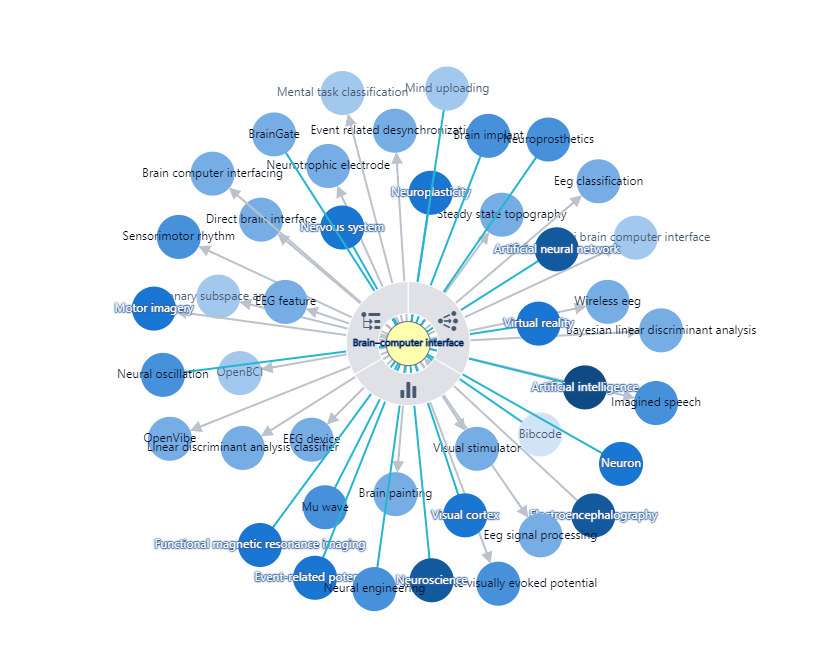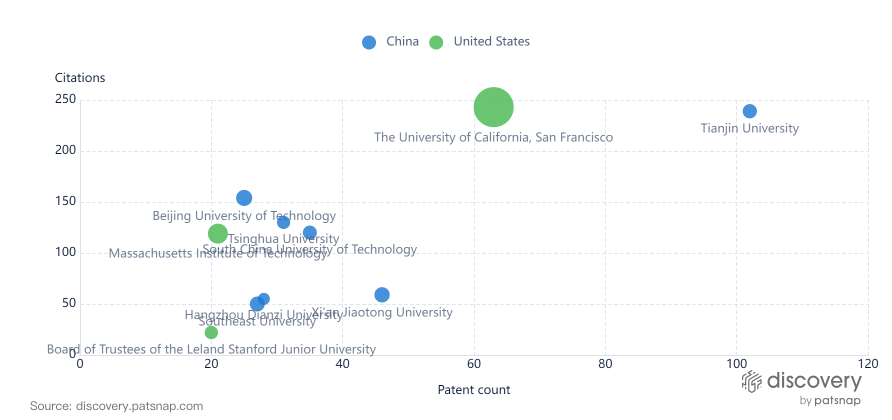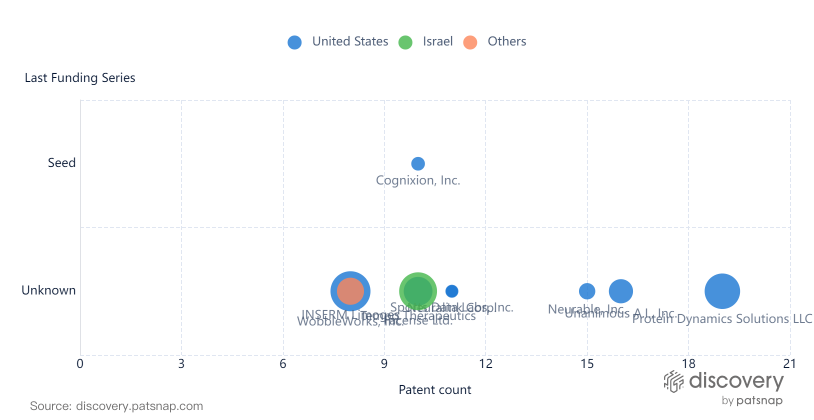Mind and Machine: 3 Brain-Computer Interface Technology Trends
“The human brain has 100 billion neurons, each neuron connected to 10 thousand other neurons. Sitting on your shoulders is the most complicated object in the known universe.” – Michio Kaku
Mind and Machine: 3 Brain-Computer Interface Technology Trends
Imagine being able to control your external world with your thoughts alone, while also having access to all the information currently found online… in your head. While this might sound like a Sci-Fi movie, it’s a plausible future scenario. This technology, known as a brain-computer interface (BCI), is expected to help connected humans achieve all the above without using their traditional neuromuscular pathways.
In recent years, interest in BCI technology skyrocketed. These days, it’s one of the hottest topics in the global startup community. Last year ushered in record-breaking funding in this space, noting $1.4 billion raised across 46 deals.

In this article, we explore what BCI technology is and the innovation trends driving it forward.
What is brain-computer interface technology?
In simple terms, a BCI is a bridge between your brain and an external device. Leveraging multiple censors and complex algorithms, it’s becoming easier to analyze brain signals and extract relevant brain patterns, which can then be recorded and analyzed by a non-invasive device. This gives humans the ability to directly control machines, without the physical constraints of the body.
Originally, BCI technology was developed to help paralyzed people control assistive devices using their thoughts. However, new use cases are being identified every day. An increasing number of tech startups are targeting the brain, with the end goal of connecting the human brain with a computer interface. The proverbial race to create BCIs that are cheap, small, and accessible to everyone, is on.
While this is an exciting time for BCI technology, there are also a plethora of ethical considerations to consider. Many people are not okay with the idea of having a permanent brain implant. Fortunately, there are also wearable BCIs on the market, that do not require an operation or implant into your brain.
Brain-computer interface innovation trends

BCIs are ripe with research — take the industry mind map above as an example. Relevant technologies or topics are depicted in relation to the maturity of academic research in that specific sector. The darker circles depict higher research maturity (such as electroencephalography, also known as EEG, or artificial intelligence) while the lighter circles depict emerging technologies or those with less academic research. For example, ‘mind uploading’ does not have academic maturity right now, but it may become increasingly relevant in the coming years as research further develops.
Innovation trend #1: The US and China dominate research
Research affiliations in the BCI space is highly centralized in the US and China. In particular, Tianjin University and the University of California (UC), San Francisco, are highly active players in the space. A publication worth noting is UC San Francisco’s patent CA2886095A1 Systems and methods for sensory and cognitive profiling, which is valued at roughly $2.34 million. This patent claims methods, devices, and systems for producing cognitive and/or sensory profiles, and the processing the physiological data to generate an information set including one or more quantitative values associated with the selected profile category.

Innovation trend #2: BCI high-growth startups are on the rise
As BCI trends across the world, many high-growth startups have emerged. This comes as no surprise since the BCI industry is expected to grow at a substantial CAGR (Compound Annual Growth Rate) of 14.3% from 2021-2027. The potential for growth in the healthcare industry is immense, especially related to the treatment of neural disorders. There is also growing demand for BCI integrated video gaming gadgets and increased research involving BCI for the defense sector, which are other major factors driving the growth of the global brain-computer interface market.

Analyzing companies founded in the past 10 years, we see some of the most active patent filing entities above. In terms of funding, Cognixion (a computer software company specializing in artificial intelligence, machine learning, and biotechnology) raised about $15 million, most recently from the Amazon Alexa Fund. Cognixion’s software features a sensory communication system that enables people to communicate using a BCI that translates brainwaves directly into communication.
Another notable startup is Elon Musk’s Neuralink, likely the most well-known startup in this field. Neuralink is working to develop ultra-high bandwidth brain-machine interfaces to connect humans and computers, to survive the upcoming age of artificial intelligence (AI). Musk likens this technology to a “Fitbit in your skull.”

When compared to other BCI companies, Neuralink excels and is well above the industry average with respect to its innovation intensity (total patent count) and momentum (patent count within the last three years). However, Neuralink falls below the average when it comes to innovation originality (total patent citations) and innovation valuation (average patent valuation). Many people report that while Neuralink has solid engineering, its neuroscience is mediocre.
Regardless, Neuralink put a huge spotlight on the BCI industry, notably through its demonstration of Pager the monkey. Pager had Neuralinks coin-sized disc installed in its brain, and after training, it was able to play a game of Pong simply by thinking about its actions.
If a monkey can do this with simple training, think about what humans could do if our brains were connected to computers. In terms of application, Neuralink hopes to launch its technology to help quadriplegics regain their digital freedom. In the long term, the company believes its chip will be used to meld human consciousness with AI. Neuralink recently raised $205 million in its series C funding, which will accelerate the development of its current and future products. Human trials are expected to begin later this year.
Innovation trend #3: BCI clinical trials
In May 2022, the first commercial BCI entered human trials.
Synchron, an endovascular brain-computer interface company, enrolled its first patient in a U.S. clinical trial, putting the company’s implant on a path toward potential regulatory approval for commercial use in paraplegics and those experiencing paralysis.
“This first patient enrollment under an IDE for a permanently implanted BCI is a major milestone for the entire field, as we advance our solution for the five million people in the United States living with paralysis,” said CEO Thomas Oxley in a company statement.
Founded in 2016, Synchron has achieved several important breakthroughs for the BCI industry. In 2016, the company used its product Stentrode to produce the first brain recording of a vascular ECoG from inside a sheep’s blood vessel. The study was later published in Nature Biotechnology. Two years later, Synchron showed how localized brain stimulation can be achieved via a blood vessel, with no open brain surgery necessary. Finally, in 2021, the company illustrated how two humans implanted with a Stentrode were able to control external devices to develop email communications, text messages, as well as online banking solely by using their thoughts.
While BCIs are still in their early days, with many challenges yet to be solved, the potential for human evolution is exciting. From helping paraplegics to enhancing the everyday lives of humans around the world, BCIs are sure to be life-changing for many. As coverage surrounding the fifth industrial revolution increases, BCIs will be a part of this next groundbreaking technological era.
Author Bio

Kate White is the Customer Advocacy Manager at PatSnap. She spends her days learning about and promoting PatSnap customers by highlighting their groundbreaking innovations. Kate holds a Bachelor’s degree in Medical Sciences and Psychology from Western University. In her spare time, she enjoys painting and being outside with her Siberian Husky.